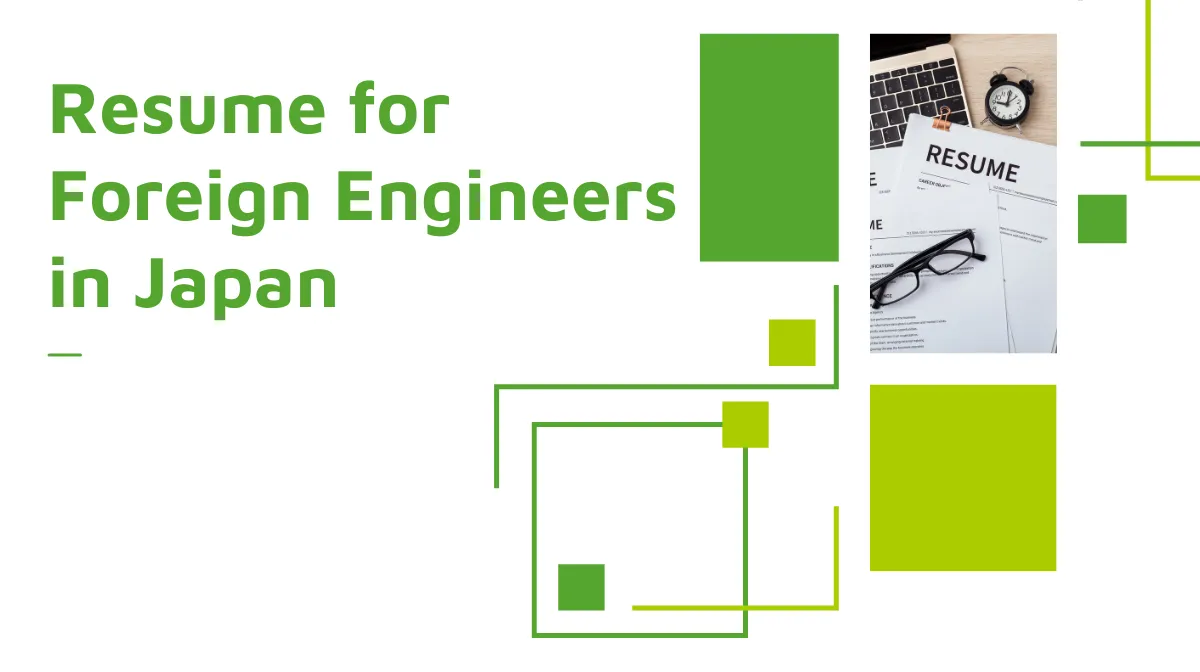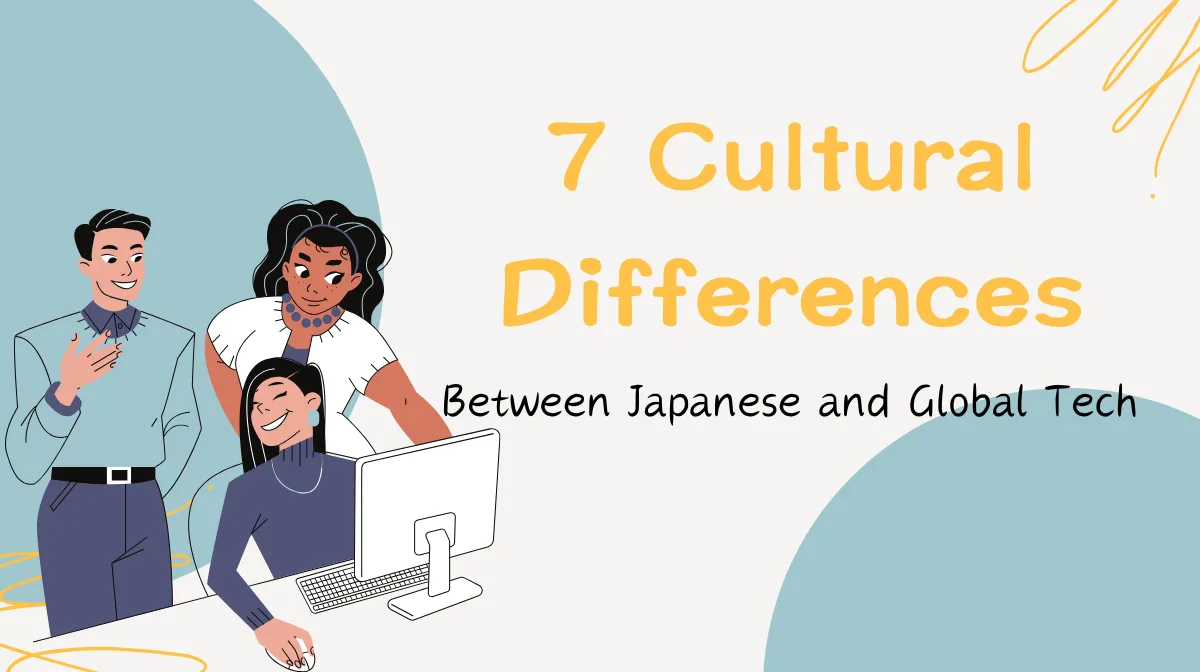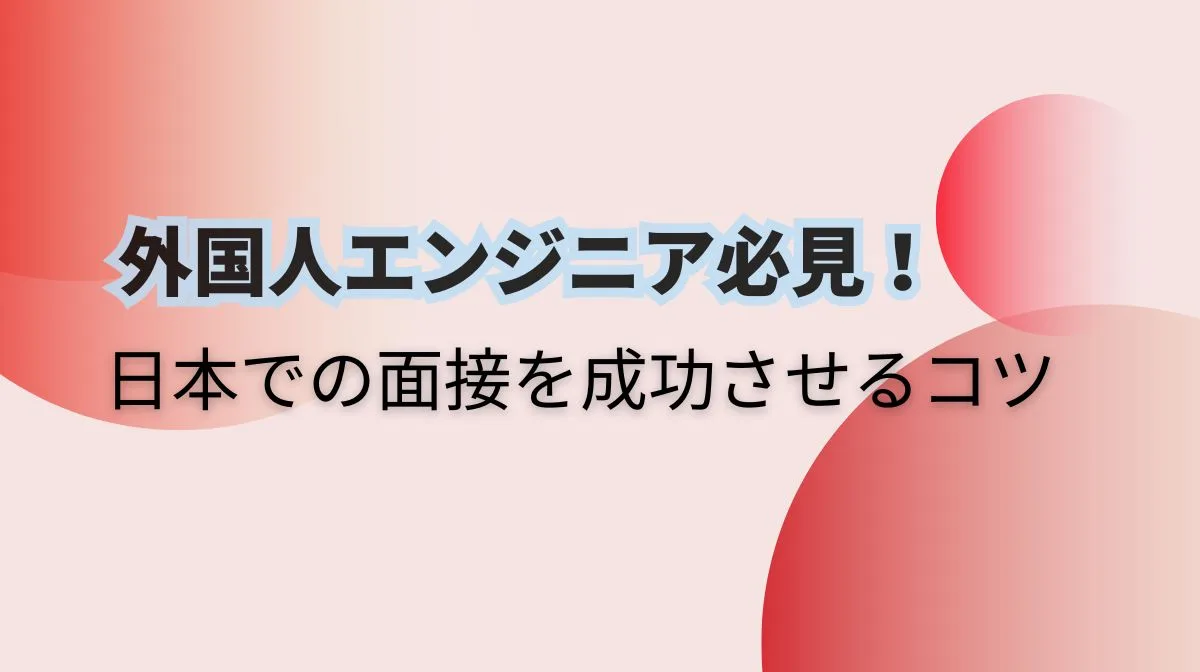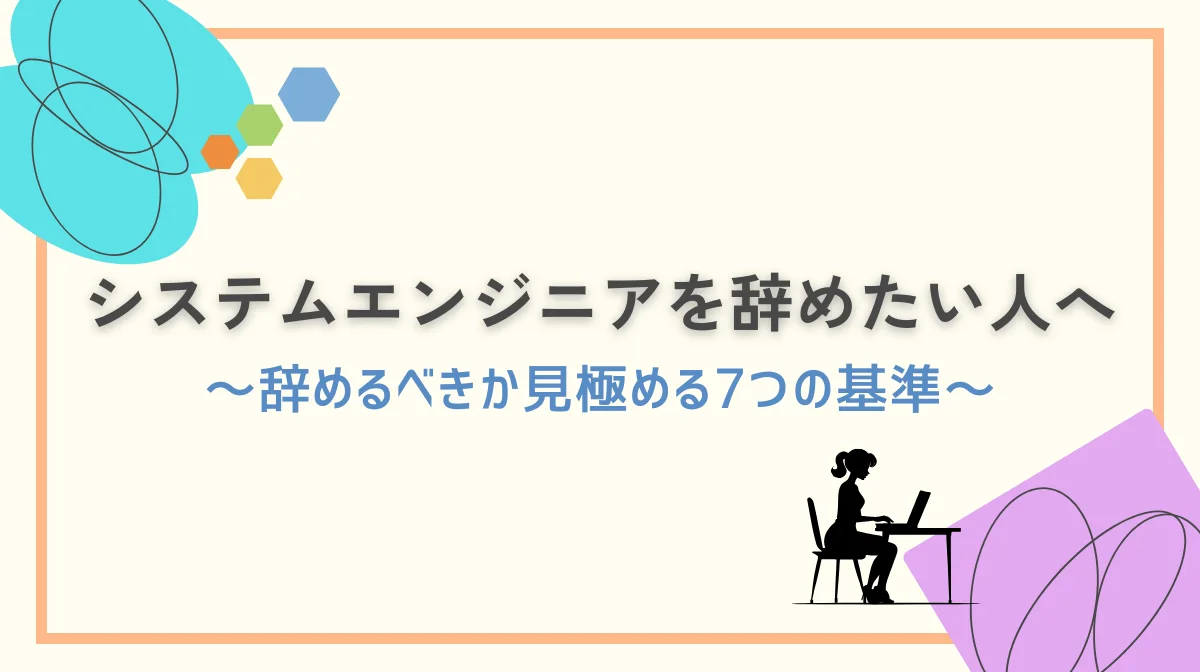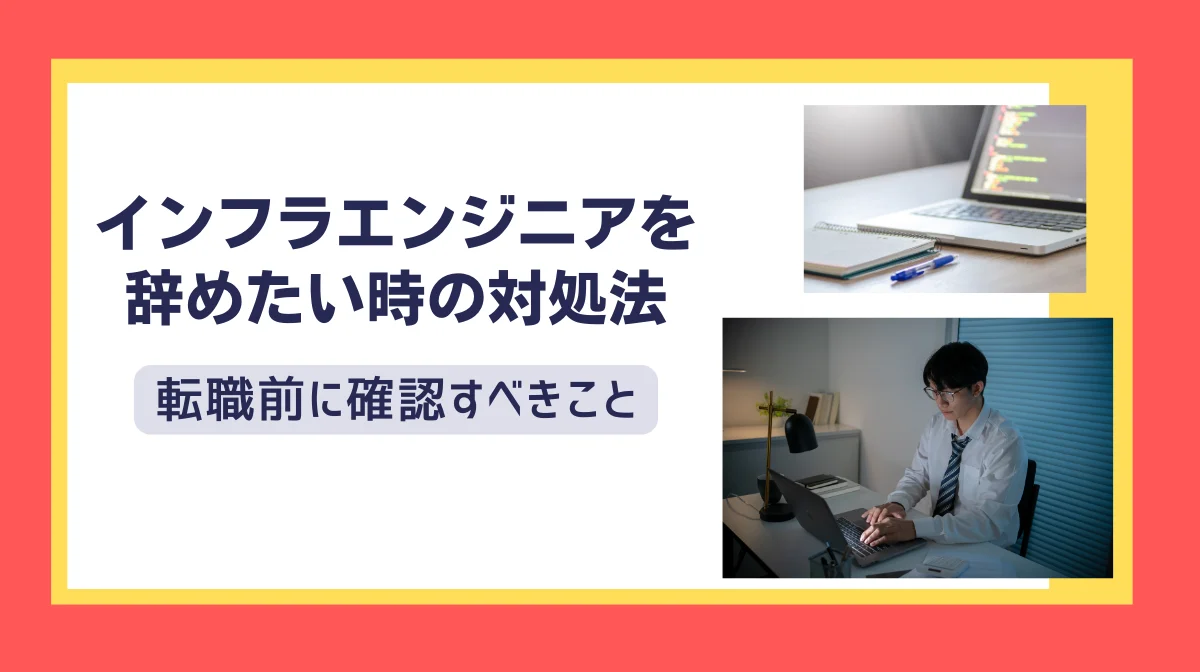Foreign engineers who want to build a career as a developer in Japan need to understand the unique culture and customs of Japan’s IT industry. Understanding the differences between global standards and Japan’s development environment is the first step to success.
This article provides a thorough explanation of everything from the roles, types, and working styles of Japanese developers to success strategies for foreign engineers.
- Japan’s unique developer culture and how it differs from global standards.
- Different developer types in Japan and their specific roles and career paths.
- Success strategies for foreign engineers working in Japan’s IT market.
1. Definition and Basic Concepts of Developers in Japan

To succeed in Japan’s IT industry, it is essential to understand how the “developer” job category is defined and what roles it encompasses.
Particularly for engineers from overseas, understanding the differences between global standards and perceptions in the Japanese market is an important point.
General Definition of “Developers” in Japanese Companies
In Japanese companies, “developer” is primarily used to refer to software developers. Generally, they are responsible for coding based on given specifications and designs, implementing programs.
Compared to overseas, the term “developer” tends to be used in a narrower sense in Japan, often specifically referring to personnel whose main work is coding.
The definition of “developer” also varies depending on the company’s size and culture. In large corporations, job scopes are often clearly delineated, and developers tend to focus mainly on coding. However, in startup companies, it’s not uncommon for them to handle a wide range of tasks from planning to design and implementation.
Differences Between “Engineer” and “Developer” and Japanese Perceptions
In Japan’s IT industry, when distinguishing between the terms “engineer” and “developer” “engineer” is generally perceived as a broader concept.
Engineers refer to a wide range of technical positions including design and analysis, while developers are positioned as job categories that specialize particularly in code implementation.
General Perceptions in Japan
Engineer: Broad responsibilities including overall system design, requirements analysis, technology selection, etc.
Developer: Responsible for specific code implementation, testing, debugging, etc.
However, in foreign companies and recent startups, this distinction is becoming blurred, and cases where “software engineer” and “developer” are used almost synonymously are increasing.
Characteristics of Job Title Usage in Japan’s IT Industry
Japan’s IT industry shows several characteristic tendencies regarding job title usage.
Extensive Use of English-Derived Katakana Job Titles
In addition to “programmer” “engineer” and “developer” many job titles such as “architect” and “consultant” are written in katakana transliteration of English words, but their interpretation and scope of work do not necessarily match the definitions in English-speaking countries.
Japan-Specific Job Titles
“SE (System Engineer)” is widely established.
While overseas, “System Engineer” often refers to infrastructure or hardware-oriented positions, in Japan it refers to a broad range of positions that handle everything from requirements definition to design and sometimes programming.
Major Differences Between Western and Japanese Developer Concepts
There are significant differences in expectations and evaluation criteria for developers between the West and Japan.
Western Developers
There is a strong tendency to demand specialization and autonomy. Having deep knowledge and skills in specific technology areas and being able to solve problems based on one’s own judgment is valued. Additionally, innovation and proposing new ideas are actively expected.
Japanese Developers
There is a tendency to emphasize cooperation and the ability to fulfill roles within a team. Being faithful to specifications and providing high-quality code is primarily required, and team results are often prioritized over individual achievements.
2. Terminology Differences: Global Standards and Japan-Specific Interpretations

Even as globalization in the IT industry progresses, the Japanese market has developed unique job definitions and terminology interpretations.
Understanding these differences, which often confuse foreign engineers working in Japan, will be important for career building.
Distinction Between “Programmer” “Engineer” and “Developer” in Japan
In Japan’s IT industry, similar job titles are used with subtly different meanings.
Programmer
The most limited job title, primarily specializing in coding and recognized as a role that implements based on specifications given by higher-level positions.
Engineer
Refers to broader technical positions and is recognized as a job category that can be involved in a wide range of processes from system design to implementation.
Developer
A relatively new job title, often used as an intermediate position with a broader scope than programmer but more implementation-focused than engineer.
Meaning Evolution: Japan’s Developer Definition Changing Over Time
The definition of IT job categories in Japan has changed over time.
From the 1980s to 1990s, “programmer” was the common designation, but from the 2000s, “SE (System Engineer)” became mainstream.
From the 2010s onward, designations like “engineer” and “developer” increased, and job categories with clearer specialization also increased.
Behind this change are the promotion of DX (Digital Transformation), globalization, and the penetration of startup culture. Younger engineers tend to have more global-standard job perceptions.
Reference: Ministry of Economy, Trade and Industry: Industry DX
■日本でエンジニアとしてキャリアアップしたい方へ
海外エンジニア転職支援サービス『 Bloomtech Career 』にご相談ください。「英語OK」「ビザサポートあり」「高年収企業」など、外国人エンジニア向けの求人を多数掲載。専任のキャリアアドバイザーが、あなたのスキル・希望に合った最適な日本企業をご紹介します。
▼簡単・無料!30秒で登録完了!まずはお気軽にご連絡ください!
Bloomtech Careerに無料相談してみる
3. Types and Specialization Areas of Japanese Developers

In Japan’s IT industry, there are various specialization areas even within the single term “developer”
The required skill sets and expectations differ for each area, and understanding these differences is important when foreign engineers build careers in Japan.
Frontend Developers: Roles and Expectations in Japanese Companies
The role of frontend developers in Japanese companies has several characteristics compared to Western companies.
First, Japanese companies tend to have a clear division of labor between designers and engineers.
Frontend developers are required to faithfully implement designs created by designers, and they often have little involvement in UI/UX design itself.
Technically, while the adoption of modern frameworks like React, Vue.js, and Angular is progressing, the introduction speed tends to be somewhat slower compared to Western companies.
Additionally, legacy browser support is still considered important in large corporations.
Backend Developers: Roles and Expectations in Japanese Companies
Backend developers play a central role in Japanese companies, with particular emphasis on robustness and security.
A characteristic of backend development in Japan is that the boundary with infrastructure is often ambiguous, requiring not only pure backend development but also knowledge of server management and database management.
Cases requiring integration with large-scale legacy systems that have been operating for many years are also common.
As for technology trends, while the adoption of microservices architecture is progressing, large corporations tend to be cautious in their introduction, and monolithic architectures remain mainstream.
Full-Stack Developers: Definition and Reality in Japan
Full-stack developers refer to developers who can handle a wide range of technology stacks from frontend to backend, but their positioning in Japan differs somewhat from the West.
In Japan, division of labor has traditionally been mainstream, so the job category of full-stack developer was not very common.
However, against the backdrop of the recent increase in startup companies and development efficiency, demand for full-stack developers is gradually increasing.
Characteristics by Specialized Areas: Mobile App Developers, Game Developers, etc.
Japan also has many developers in characteristic specialized areas.
Mobile App Developers
Japan has a particularly high iOS market share compared to the global market, resulting in especially high demand for Swift/Objective-C.
Additionally, native app development is mainstream, requiring understanding of Japan-specific services and UX.
Game Developers
Japan is a global gaming powerhouse with deep-rooted game development history and culture. In console game development, development for Japan-originated platforms like PlayStation and Nintendo Switch is thriving.
The mobile game market is also large, requiring understanding of Japan-specific monetization models like gacha systems.
AI Engineers/Data Scientists
In Japan, AI technology has entered the practical application phase, requiring not only theoretical knowledge but also business application knowledge.
AI utilization is progressing in manufacturing and finance, and in addition to specialized knowledge in image recognition, natural language processing, and predictive analysis, domain knowledge is also considered important.
4. Japan-Specific Developer Job Categories

Japan’s IT industry has unique job categories and business models that have developed uniquely and are rarely seen in the global market.
Understanding these characteristics will enable foreign engineers to build careers in the Japanese market more strategically.
Role of Developers at SIers (System Integrators)
SIers (System Integrators) have a significant presence in Japan’s IT industry, and many developers work in this business model.
SIers are companies that undertake the development of core systems and web systems for enterprises and government agencies, having achieved unique development in Japan.
Characteristic Features of SIers
The “multi-tier subcontracting structure” can be cited. A hierarchical structure is formed where major SIers serve as prime contractors and small to medium SIers serve as subcontractors, with actual coding work often handled by subcontracting companies.
Therefore, as careers progress, project management and customer negotiation skills tend to be valued more than coding work.
For Foreign Engineers Working at SIers
Not only technical skills but also Japanese communication abilities, business manners, and customer relationship building skills become important.
Characteristics of Embedded Systems Developers and Japan’s Strengths
Embedded systems development is one of the areas where Japan has global strengths.
Against the backdrop of strength in manufacturing industries like automobiles, home appliances, and industrial equipment, there is high demand for embedded systems developers who develop software installed in these products, and high technical capabilities have been accumulated.
Japan’s Embedded Systems Development
The “quality first” philosophy is thoroughly implemented, with rigorous code reviews and testing processes.
Additionally, optimization techniques based on understanding hardware constraints and design philosophies premised on long-term maintenance are also characteristics.
Particularly in fields like automobiles, robotics, and medical equipment, there are many critical systems related to human life, requiring high safety and reliability.
Differences in Roles with In-House Engineers
In-house engineers refer to engineers who belong to general companies (business companies) rather than IT companies and are responsible for developing and operating their own company’s systems and services.
They have different characteristics and roles from SIers and software vendors.
Major Characteristics of In-House Engineers
They develop systems directly connected to their company’s business. Therefore, not only technical skills but also deep understanding of their company’s business content and industry characteristics is strongly required.
Due to the recent trend of DX (Digital Transformation) promotion, many companies are strengthening their in-house engineers, and job demand is also increasing.
Positioning of Agile Development/Scrum Masters in Japan
While agile development methodologies and scrum have spread globally, their adoption status and positioning in Japan have unique characteristics.
Japanese corporate culture has a strong value of “making plans and executing them reliably,” showing high compatibility with waterfall-type development that establishes detailed plans in advance.
Agile Development
The concepts of “accepting change” and “iterative improvement” differ from traditional Japanese project management methodologies.
However, in recent years, as faster service development and response to market changes have become necessary, agile development adoption is progressing, particularly in web services and mobile application development.
Scrum Master
The role of Scrum Master also has a characteristic positioning in Japan.
While the original Scrum Master role is to facilitate team self-organization, in Japan it is often perceived as a “coordinator” or “facilitator”
■日本でエンジニアとしてキャリアアップしたい方へ
海外エンジニア転職支援サービス『 Bloomtech Career 』にご相談ください。「英語OK」「ビザサポートあり」「高年収企業」など、外国人エンジニア向けの求人を多数掲載。専任のキャリアアドバイザーが、あなたのスキル・希望に合った最適な日本企業をご紹介します。
▼簡単・無料!30秒で登録完了!まずはお気軽にご連絡ください!
Bloomtech Careerに無料相談してみる
5. Technical Skill Sets Required for Japanese Developers

To succeed in Japan’s IT market, it is important to understand Japan-specific technical environments and trends in addition to global standard technical skills.
Major Programming Languages Used in Japanese Companies and Their Trends
Programming languages used in Japanese companies show various trends depending on industry and company size. Overall, there is a conservative tendency to value proven technologies, but languages adopted differ by field.
Java is particularly the most widely used language in Japanese enterprise system development. It is used extensively from core systems of large corporations and government agencies to web applications.
C/C++ are mainly used in embedded software development and systems requiring high performance. Demand is particularly high in manufacturing industries where Japan has strengths, such as automobiles, home appliances, and industrial equipment.
Interestingly, old languages like COBOL continue to be actively used in legacy systems at financial institutions and public systems.
Frameworks and Libraries: Commonly Used Stacks in Japanese Companies
Framework and library selection in Japanese companies also tends to emphasize stability and maintainability.
In Java development, Spring Framework is widely adopted as the de facto standard. Adoption rates are particularly high in large-scale enterprise systems, with components like Spring Boot and Spring MVC being utilized.
In frontend development, while adoption of modern frameworks like React, Vue.js, and Angular is progressing, the pace of introduction tends to be somewhat slower compared to the West.
Particularly in the enterprise domain, jQuery is still widely used.
In Japan, domestically produced frameworks like SAStruts are also partially utilized. When foreign engineers work in Japan, it will be helpful to deepen understanding of Japan-specific frameworks and their operational methods in addition to knowledge of globally mainstream frameworks.
Database Technology and Japanese Companies’ Data Management Approaches
Japanese companies’ data management approaches are characterized by emphasizing high reliability and security.
Relational Database Management Systems (RDBMS) remain mainstream, with Oracle Database particularly maintaining a strong position in large corporations and government agency systems. For web services, MySQL/MariaDB are widely adopted.
On the other hand, NoSQL database adoption is limited compared to the West. In traditional companies, RDBMS is often chosen for its track record and stability.
Awareness of data security and personal information protection is very high, with data management conducted in compliance with Japan’s Personal Information Protection Act (PIPA) and industry-specific guidelines.
Reference: e-GOV Legal Search: Act on Protection of Personal Information
Coexistence of Legacy Systems and Modern Technology: Japan’s Unique Technical Environment
One characteristic of Japanese companies’ technical environments is the coexistence of legacy systems and modern technology. Core systems that have been operating for over 20 years are not uncommon, and integration with and migration from these systems has become an important challenge.
This situation is known as the “2025 Cliff” problem, where renewal of aging legacy systems is considered urgent for maintaining Japanese companies’ digital competitiveness.
This has increased demand for engineers who can understand both legacy systems and modern technology.
6. Technology Trends: Gaps Between Japan and the World
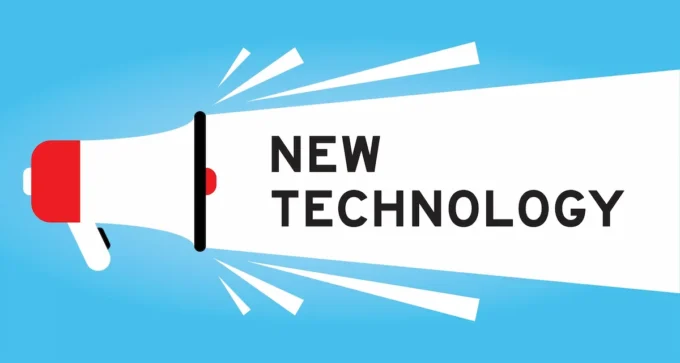
In the technology world, new technologies and trends are constantly emerging and spreading globally. However, there are differences in adoption speed and approaches by country and culture.
Differences in Approaches to Open Source
Japanese companies are generally active in “using” OSS but tend to be limited in “contributing” and “participating”
Many companies actively adopt OSS like Linux, Apache, MySQL, and WordPress, but code contributions and active participation in communities are relatively limited.
Language barriers (many OSS communities are English-based), corporate culture (individual engineers’ OSS contributions are difficult to evaluate within companies), and intellectual property concerns serve as obstacles.
Changes Are Being Seen in Recent Years
Particularly centered on Japanese subsidiaries of foreign companies and IT ventures and startups, a culture encouraging active contribution to OSS is spreading.
Cloud Technology Adoption Status and Challenges
The cloud technology adoption status of Japanese companies is somewhat behind Western countries overall, but is steadily progressing.
Particularly, the penetration rate of major cloud services like AWS, Microsoft Azure, and Google Cloud Platform (GCP) is increasing year by year.
Characteristics of Japanese Companies’ Cloud Adoption
Gradual migration from on-premises, central use of IaaS, and adoption of hybrid cloud strategies can be cited. Additionally, many companies show cautious attitudes toward cloud migration due to security and compliance concerns.
The shortage of engineers proficient in cloud technology is also a major challenge, and demand for engineers with AWS certifications or Azure certifications is high.
DevOps Culture Penetration and Practice Methods
DevOps is a culture and practice aiming to integrate development and operations, but its penetration in Japanese companies is still limited compared to the West.
Situation in Japan
In traditional Japanese corporate culture, “development” and “operations” have been clearly separated, with different departments or teams typically responsible for each. This organizational structural difference affects the penetration of DevOps culture.
Tool adoption progresses but cultural transformation is slow, partial adoption is common, and adherence to responsibility boundaries are characteristics of Japanese companies’ DevOps adoption. Additionally, the concept of SRE (Site Reliability Engineering) is still in the penetration stage.
Security Approaches and Characteristics of Japanese Companies
Japanese companies’ security approaches tend to emphasize legal regulations and compliance.
Compliance with various laws including the Personal Information Protection Act and industry-specific guidelines is emphasized, with many formal security measures (checklist methods) observed.
Japan’s Characteristics
Emphasis on compliance, emphasis on preventive measures, emphasis on physical security, and document-centered security governance are characteristics of Japanese companies’ security approaches.
7. Work Styles and Development Culture of Japanese Developers

The environment where Japanese developers work has unique work styles and development cultures that differ from global standards.
General Structure and Hierarchy of Japanese Development Teams
Japanese development teams generally have clear hierarchical structures with finely divided roles and responsibilities.
Hierarchical Structures Are Common in Many Companies
Hierarchical structures with Project Managers (PM) at the top are common, with middle management positions like Project Leaders (PL) and Technical Leaders (TL) positioned below. Further below are practitioners responsible for design, development, testing, etc.
Seniority Systems Are Still Common
In Japanese companies, the influence of seniority systems is seen, with years of experience often reflected in positions. Additionally, compared to Western organizations, there is a characteristic tendency to emphasize team achievements over individual achievements.
Decision-Making Processes and “Nemawashi” Culture
Decision-making processes in Japanese companies have significantly different characteristics compared to Western companies. Particularly, the culture called “nemawashi” (behind-the-scenes consensus building) can be said to be unique to Japanese companies.
Japanese companies generally tend to emphasize bottom-up consensus building rather than top-down decision-making. Before making important decisions, a process of listening to all stakeholders’ opinions and forming consensus is valued.
“Nemawashi” refers to the process of consulting with stakeholders in advance before formal meetings to coordinate opinions. This is a culture for avoiding conflicts and opposition in meetings and realizing smooth decision-making.
Key Points for Foreign Engineers
Understanding “invisible” processes is important.
Additionally, in Japanese workplaces, the ability to “read the atmosphere” is valued. This refers to the ability to perceive the mood of the place and others’ intentions that are not explicitly expressed, and understanding the distinction between tatemae (public stance) and honne (true feelings) in meetings is particularly important.
Document-Oriented Tendencies and Detailed Specifications
A characteristic feature of Japan’s development process is the emphasis on creating detailed documentation. Compared to software development in the West, more time tends to be spent on documentation.
In typical projects, detailed documents are created at each stage, including requirements definition documents, basic design documents, detailed design documents, and test specification documents. These documents are characterized by being very meticulous, with specifications described down to the smallest details.
Purpose of Emphasizing Documentation
This document-oriented tendency aims to eliminate ambiguity and ensure quality.
It is also a measure to prevent “personalization” enabling knowledge sharing and inheritance through documents rather than depending on individual knowledge and experience, allowing for response to personnel changes and long-term maintenance.
Commitment to Quality and “Craftsman Spirit”
One of the most characteristic elements of Japan’s software development culture is the commitment to quality and “craftsman spirit” Japan’s traditional manufacturing spirit is strongly reflected in software development as well.
In Japanese companies, the “quality first” philosophy is strong, with priority often given to low bug rates and system stability. Particularly in areas requiring high reliability such as financial institutions and manufacturing, thorough testing and quality assurance processes are implemented.
May Require Time for Releases
On the other hand, this “perfectionism” sometimes hinders rapid releases.
While overseas it is common to release MVPs (Minimum Viable Products) early and improve based on user feedback, Japanese companies tend to require higher quality products at the initial release point.
8. Work Styles and Environment of Developers at Japanese Companies
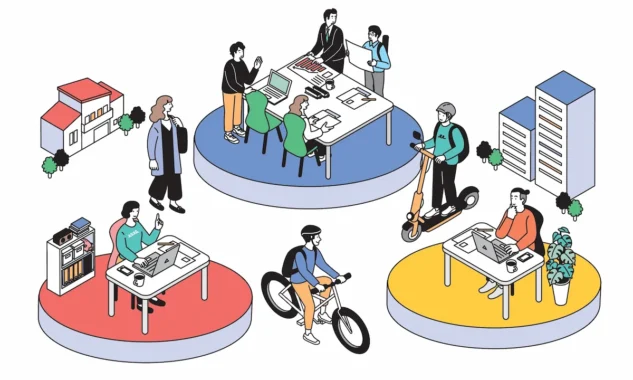
In addition to software development methodologies and technology stacks, understanding the physical work environment and working styles at Japanese companies is important for foreign engineers.
General Working Hours and Reality of Work Styles
Japan’s statutory working hours are basically 8 hours per day and 40 hours per week, but the reality for IT engineers often differs from this. Particularly during busy periods or before releases, long working hours may occur.
However, due to recent “work style reform” overtime regulations and changes in corporate awareness, the work environment is gradually improving. Particularly since the enforcement of the “Work Style Reform Related Laws” in 2019, overtime reduction and promotion of paid leave usage have progressed.
Companies with Flexible Work Systems Are Also Increasing
As for work systems, in addition to traditional fixed-time work, companies introducing flextime and core time systems are increasing.
Differences by company type are also notable: foreign IT companies and startups often adopt relatively flexible work systems, while traditional Japanese companies tend to maintain fixed working hours.
Remote Work Response Status and Changes
The remote work situation at Japanese companies changed significantly around the COVID-19 pandemic.
Before COVID-19, Japanese companies had a strong culture of “coming to the office to work,” and remote work introduction was limited. Particularly, Japanese corporate culture that emphasizes face-to-face communication and “reporting, contacting, consulting” (horenso) served as barriers to remote work adoption.
Changes Since 2020
After the pandemic outbreak in 2020, many companies rapidly shifted to remote work systems, with cloud services and collaboration tools being introduced.
Currently, many companies have adopted “hybrid work” (combination of office and remote), with patterns of coming to the office 2-3 days per week and working remotely the rest being common.
However, resistance to remote work remains in traditional Japanese companies, with office culture particularly strong in manufacturing and finance.
9. Career Paths and Growth Opportunities for Japanese Developers

Career formation for developers at Japanese companies has different characteristics from the global market.
Career Steps in Traditional Japanese Companies
In traditional Japanese companies, career paths based on simultaneous recruitment of new graduates and long-term employment are common. In the IT industry, this influence remains strong.
Typical Career Step Examples
Starting as a programmer (where coding is the main work), advancing to SE (System Engineer), then proceeding through PL or PM (Project Leader/Manager) to departmental management positions is a common pattern.
This process typically takes 5-10+ years to progress gradually.
Characteristics of Japanese Companies
The influence of seniority systems is strong, with a certain correlation between years of experience and position.
Additionally, the training policy of “job rotation” is also characteristic, with many companies emphasizing gaining broad skills and perspectives by experiencing multiple departments and roles.
Specialist Route and Management Route
In Japanese companies, aiming for management positions as the ultimate career goal was traditionally common. However, in recent years, career paths as specialists are also being developed.
Many Japanese companies present two career paths: specialist route and management route.
The management route is the path toward management positions as described above.
On the other hand, the specialist route establishes positions like “Technical Specialist,” “Expert Engineer,” and “Architect,” providing career paths that pursue specialized technology rather than management work.
Common Methods and Certifications for Skill Development
Continuous skill development is essential for career advancement in Japan’s IT industry.
In Japanese companies, skill development through in-house training often becomes fundamental. Particularly, there is a culture that emphasizes OJT (On the Job Training), with skill acquisition commonly occurring through guidance from senior employees and experience in actual projects.
Certification Acquisition and Self-Development Are Also Emphasized
Many companies encourage certification acquisition and establish certification allowances and acquisition support systems.
Particularly, the “Information Processing Engineer Examination” series, which are national certifications (Fundamental Information Technology Engineer, Applied Information Technology Engineer, Advanced Information Technology Engineer, etc.), are widely recognized and serve as indicators for career formation.
Self-development is also an important element, with reading technical books, using online learning platforms, and participating in study sessions being common.
Additionally, skill development through community activities and “cross-boundary learning” such as side jobs and OSS contributions outside the company is also gaining attention.
Reference: IPA Information-technology Promotion Agency: Exam Information
10. Success Strategies for Foreign Developers

To succeed as a foreign developer in Japan’s IT market, understanding Japan-specific corporate culture and working styles is essential in addition to technical skills.
Characteristics and Precautions for Career Building at Japanese Companies
When foreign engineers build careers in Japan, understanding Japan-specific employment practices and cultural characteristics is important.
Employment Types
There are multiple employment types including “regular employee” “contract employee” and “business contractor” each with different treatment, stability, and career prospects.
Visa Types and Restrictions
Generally working with “Technical/Humanities/International Services” visas or “Highly Skilled Professional” visas is common. The requirements and activity restrictions for each need to be understood.
Differences Between Japanese Companies and Global Companies (Foreign Companies)
Evaluation criteria and cultural expectations differ significantly. Japanese companies tend to emphasize cooperation, “reporting, contacting, consulting” and long-term commitment. Global companies tend to emphasize results, speed, and specialization more.
Job Market
If technical skills are high, there is a high possibility of being hired even without fluent Japanese. However, when aiming for upstream processes or management positions, Japanese language ability becomes more important.
Methods to Leverage Global Experience and the Need for Localization
The greatest strength of foreign developers is their global perspective and experience.
By effectively leveraging this in Japanese companies, unique value can be created. At the same time, “localization” to adapt to Japan’s corporate culture and market is also necessary.
Specific Methods to Leverage Global Experience
Introducing the latest overseas technology trends and development methodologies to Japanese companies, sharing insights about overseas market user behavior and preferences, and providing perspectives based on experience collaborating in teams with diverse cultural backgrounds.
For Long-term Success at Japanese Companies
“Localization” is also essential, including adaptation to Japan-specific communication styles (indirect expression, honorific language, etc.), understanding and respecting the culture that values “wa” (harmony), and responding to Japanese companies’ decision-making processes (nemawashi, ringi, etc.).
A particularly effective positioning strategy is becoming a “bridge between Japan and overseas”
Impact of Japanese Language Ability on Career and Countermeasures
Japanese language ability is a factor that significantly affects the career prospects of foreign developers.
Even with high technical skills, it’s important to understand that career options and growth speed change based on Japanese language ability and respond strategically.
There is a clear correlation between Japanese language level and career opportunities.
For roles centered on technical implementation work, N3-N4 level basic communication may suffice, but for upstream processes (requirements definition and design), customer negotiations, and management positions, high Japanese language ability equivalent to N2-N1 level is often required.
However, required Japanese language levels vary significantly by company. In foreign companies or companies using English as their internal official language, Japanese language ability requirements may be lower.
As an effective approach to Japanese language learning, learning specialized in technical contexts is efficient. By focusing on IT industry-specific terms and expressions and business Japanese in addition to general Japanese, workplace practicality can be enhanced.
Long-term investment in Japanese language ability improvement leads to expanding career options.
Reference: Japanese Language Proficiency Test JLPT: Standards for Recognition
Voices of Foreign Developers Active in Japan
From the experiences of foreign developers actually active in Japan, we introduce success points, common challenges, and methods to overcome them.
Success comes from understanding and respecting Japan’s unique development culture while continuing to provide value from a global perspective as foreign developers.
Michael Johnson (32 years old) from the United States
Working as a senior engineer at a fintech company in Tokyo for 5 years.
“Initially, I struggled with the Japanese language barrier, but developing the habit of reading technical blogs in Japanese became a turning point. Japanese companies’ commitment to quality is strict, but the level of product completion that results is world-class” he says.
Li Wei (28 years old) from China
Active as a backend developer at a game development company in Osaka.
“What surprised me when I came to Japan was the volume and detail of documentation. At first, it seemed excessive, but now I understand its value. However, I still sometimes feel confused by the slowness of decision-making” he speaks frankly.
Anil Patel (35 years old) from India
An embedded systems engineer working at an automotive-related company in Nagoya.
“Improving Japanese language ability was the biggest investment. After obtaining N2, I became able to participate in upstream processes, and both salary and responsibilities changed significantly. Also, finding a Japanese mentor was key to success” he advises.
Sophie Dubois (27 years old) from France
In her second year as a frontend developer at a web production company in Kyoto.
“Working in Japan is difficult in understanding ‘implicit rules,’ but I was able to overcome this by actively asking questions. Now I leverage my global experience and am entrusted with leading overseas projects” she says with a smile.
11. Understanding Japan’s Developer Market to Demonstrate Your Value
Japan’s developer market has achieved unique development, and understanding the differences from global standards is important.
To succeed as a foreign engineer, adaptation to Japan’s corporate culture is required in addition to technical skills. However, experience from your home country and global perspective become great strengths.
By investing in Japanese language ability improvement and cultural understanding while demonstrating value as a “bridge between Japan and the world,” you can build a unique career in Japan’s IT industry.







